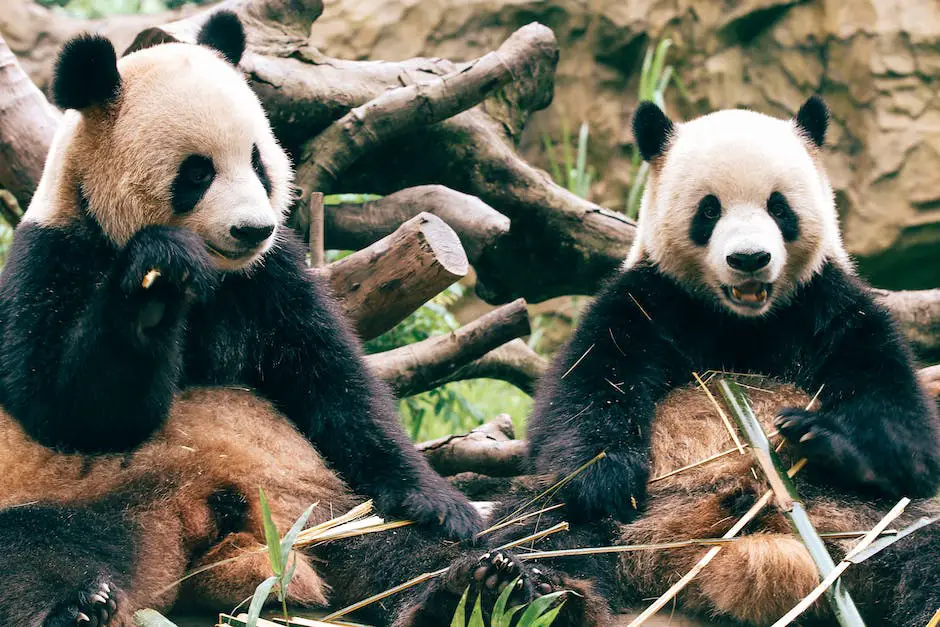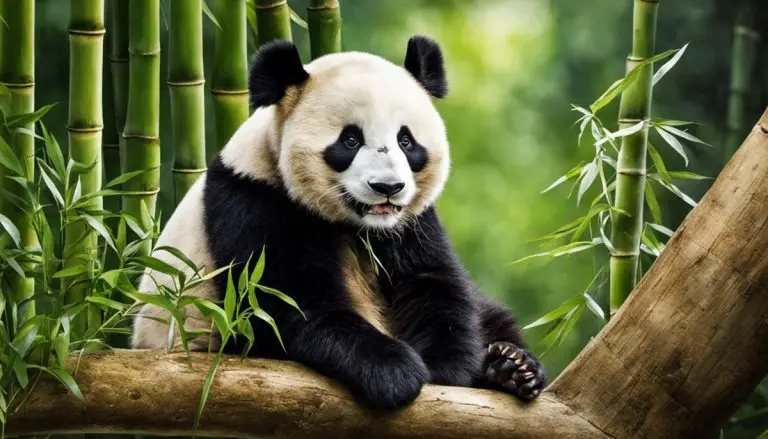In the grand tapestry of animal life on planet Earth, few creatures summon as much curiosity and fascination as the panda bear. Distinguished by their black-and-white fur and known for their bamboo-based diet, pandas remain an emblem in the world’s collective consciousness. Simultaneously, however, marsupials — a classification of mammals that includes creatures like kangaroos and koalas — present distinctive and intriguing characteristics of their own. Their particular habits and traits raise a question in the minds of many: Do pandas belong to this particular category of mammals? This discussion aims to explore this question, dissecting the defining attributes of both pandas and marsupials and scrutinizing their potential overlap.
Understanding Pandas
Understanding Pandas: Their Origin and Physical Characteristics
Pandas, specifically Giant Pandas, known scientifically as Ailuropoda melanoleuca, are not marsupials, they are mammals falling under the category of Carnivora, specifically under the bear family, Ursidae. Originating from South Central China, these creatures are recognized globally for their distinctive black and white fur, a feature that helps them blend in their natural snowy habitat.
Understanding Pandas: Habitat and Dietary Habits
Giant pandas are primarily found residing in dense bamboo forests situated in the remote mountainous regions of China, more specifically in the provinces of Sichuan and Gansu. Although they belong to the order Carnivora, Pandas have adapted a diet almost entirely dependent on bamboo, due to their habitat. They consume various species of bamboo and must eat between 26 to 84 pounds of it each day due to its low nutritional value. Occasionally, pandas will supplement their diet with small rodents or musk deer fawns. Pandas’ teeth and jaws have evolved to be incredibly strong and broad, capable of crushing the tough, fibrous bamboo plants they feed on.
Understanding The Classification of Pandas and Marsupials
While many understand that marsupials are a unique group of mammals distinct for their method of carrying their young in pouches – a trait that kangaroos and koalas are famously known for, there exists a fair amount of confusion about where pandas fit into this taxonomy. Marsupials distinctively give birth to relatively undeveloped offspring who continue their growth and development outside of the womb in the safety of their mother’s pouch, a method significantly different from pandas’ reproductive process. Furthermore, the geographical distribution of marsupials, primarily in Australia and the Americas, differs from that of pandas, leading to the conclusion that pandas are not marsupials.

Classification of Marsupials
Fully Answering The Question: Are Pandas Marsupials?
To delve further into the mammalian classification, let’s take a closer look at marsupials. This group of mammals display an unconventional approach when it comes to rearing their offspring – one that distinguishes them from other mammalian species. Marsupials carry the likes of kangaroos, koalas, and wombats under their unique taxonomical umbrella. The hallmark characteristic of marsupials involves birthing young who are not fully developed, these offspring then continue to cultivate their growth outside of the womb, nestled safely within a pouch on the mother’s body until fully mature. This feature further affirms the conclusion that pandas, with their different methods of reproduction, do not fit into the category of marsupials.
On the other hand, we have pandas. Despite some mistaken beliefs, pandas, specifically Giant Pandas and Red Pandas, are not marsupials. Pandas are part of the order Carnivora, and more specifically, they are members of the family Ursidae, making them true bears. Like other bears, pandas do not possess a pouch, and their infants are not reared in the marsupial way. They give birth to live, comparatively developed young that do not need a pouch for further growth and development. This characteristic puts pandas among placental mammals, as opposed to the marsupial group.
To conclude our discussion, it’s essential to point out that pandas are not marsupials, though they share some similarities with them. Both pandas and marsupials come under the broad category called mammals, but they represent distinct families within this classification. Recognizing the unique characteristics that define marsupials can shed light on why pandas aren’t in this category, but rather belong to the bear family. Indeed, exploring the diversity and intricacy of the animal kingdom’s classifications is a fascinating endeavor!

Pandas: Marsupial or Not?
Pandas vs. Marsupials: Clarifying the Misunderstanding
If you’re wondering whether pandas are marsupials, the answer is quite clear; they are not. This is a widespread misconception. Marsupials are distinguished as a type of mammal that gives birth to young in an underdeveloped state. The juvenile marsupials then crawl to their mother’s pouch, where they continue to grow and develop. This group comprises animals like kangaroos and koalas, renowned for their unique pouches that serve as protective and nourishing environments for their prematurely born offspring.
Pandas: A Unique Member of the Ursidae Family
Pandas, unlike marsupials, are placental mammals classified under the Ursidae family, otherwise known as the bear family. This means that their young are birthed at a much more advanced stage of development compared to marsupials whose offspring grow in a pouch post-birth. Both species of pandas, the Giant Panda (Ailuropoda melanoleuca) and Red Panda (Ailurus fulgens), belong in this grouping, despite the often confusion due to their marsupial-like traits. The Giant Panda bears close biological ties with other “true” bears, while the Red Panda has its own unique family classification, the Ailuridae, whilst still amidst the general classification of bears. Regardless of shared traits with certain marsupials, it’s important to note that scientifically, pandas fall under the bear category, not marsupials.

Understanding the Confusion
Misconceptions Explained: Pandas and Marsupials
The frequent misclassification of pandas as marsupials can be attributed to several overlapping biological and behavioral characteristics between the species. Like marsupials such as koalas, possums, or kangaroos, pandas have unique feeding and breeding behaviors. For instance, the Giant Panda’s bamboo-based diet mirrors that of koalas, possibly leading to this uncertainty.
Despite these similarities, pandas and marsupials are distinctively classified in the animal kingdom. Pandas, members of the Ursidae family, are part of the Carnivora order, a far cry from the infra-class grouping to which marsupials belong. Marsupials are most common in the Americas and Australasia, and distinctively birth undeveloped young that continue to mature in a pouch – a feature not present in pandas. Given these substantial scientific differences, it is clear that while pandas and marsupials share certain traits, they belong to fundamentally different categories in taxonomy.

Investigating and understanding the world of animal taxonomy is a journey rife with surprises, nuances, and continual learning. By diving into the characteristics of pandas and marsupials, it becomes clear that pandas, while sharing a few superficial similarities, do not fall under the marsupial classification. It’s crucial to recognize these distinctions to fully appreciate the diversity and complexities of the animal kingdom. By doing so, not only do we gain a deeper understanding of pandas and marsupials, but we also strengthen our ability to appreciate the intricate tapestry of animal life that thrives on our planet.




